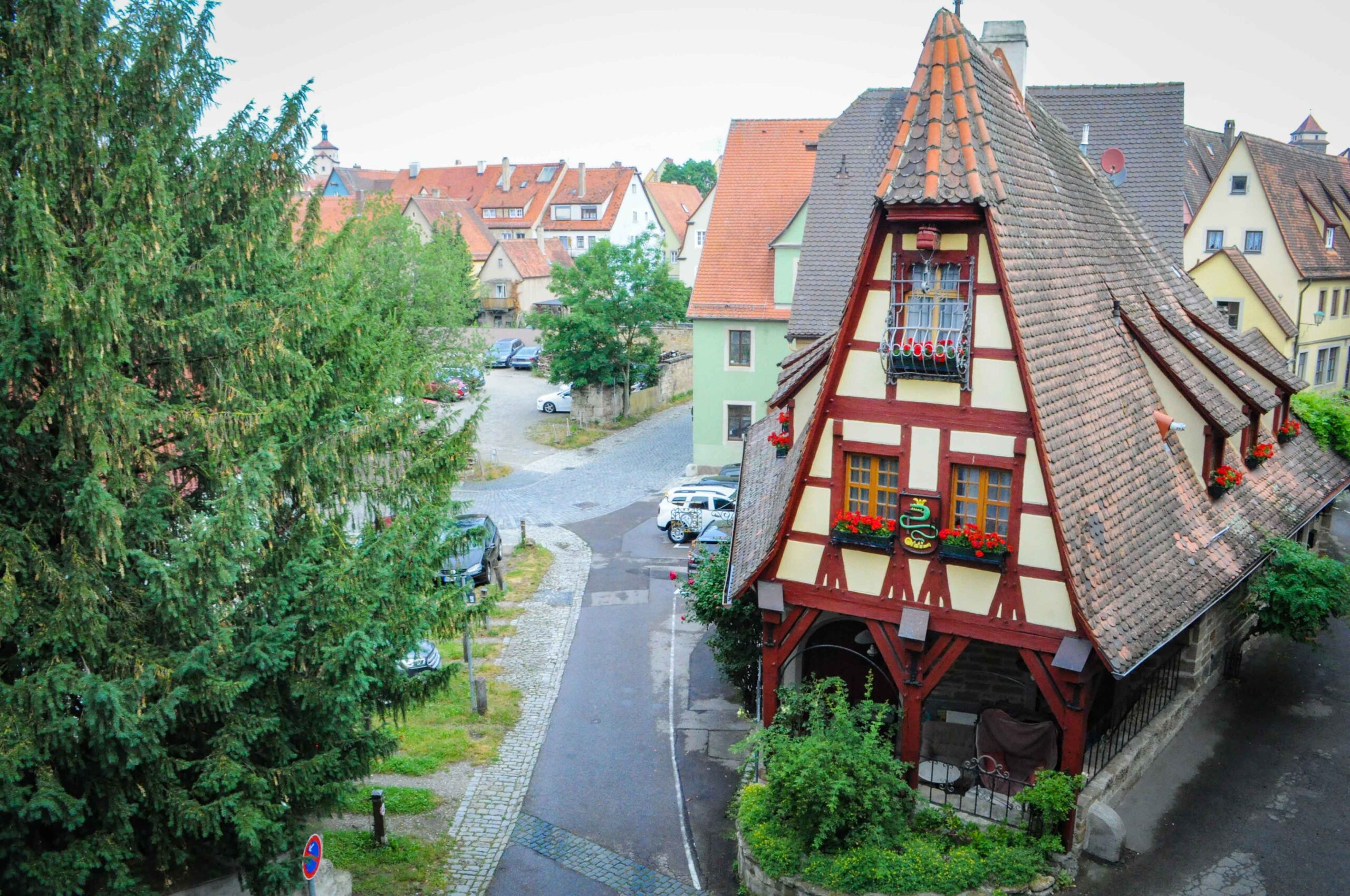One of Germany’s most well-preserved medieval towns was brought to life by tourism.
Every year, a small town in Germany’s Bavarian state called Rothenburg ob der Tauber (over the River Tauber) receives about 19-lakh day visitors and 5.6-lakh overnight tourists. These numbers continue to grow steadily, according to the tourism board’s statistics.
I had decided to stay two nights here to avoid the hordes of day trippers. During the day, I climbed its towers to enjoy unhindered views of its landscape. In the evenings, I photographed highlights of the town without people walking into my frame.
But Rothenburg was not consistently this busy through history.
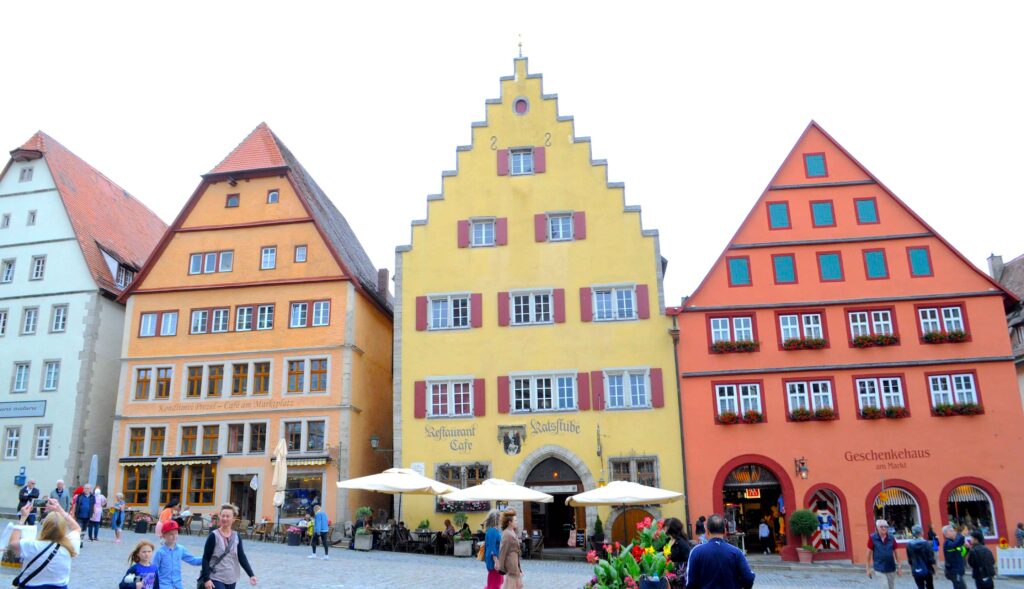
Yesteryear’s glory
The first records of the town date back to 1142. In 1274, it became the free imperial city. This meant the river town was one of the most important cities in the Holy Roman Empire, during the medieval ages.
There are evidence of its prominence in nooks and corners. Rothenburg Museum (also called Imperial City Museum) used to be a 13th century Dominican nunnery. The first construction of this nunnery begun in 1258 and the following year, nuns moved into the convent. Shortly after Reformation, the nuns moved out and in 1554 the nunnery closed down too. Today, it houses an extensive collection and narrates the town’s eventful history.
A few steps after the entrance is a shelf with the historical tankard or ‘Meistertrunk’ (master draught). Georg Nusch, former mayor of Rothenburg, drank three-and-a-quarter litres of wine from this glass which saved the city during the Thirty Years War. Every Whitsuntide this event, titled Der Meistertrunk (The Master Draught), is enacted in the town centre.
I walked past the Jewish life gallery in the museum into the vaulted southern cloister. Sculptures from 13th to 19th century adorned its walls. The 14 caryatides depicting seven virtues and seven vices caught my eye.
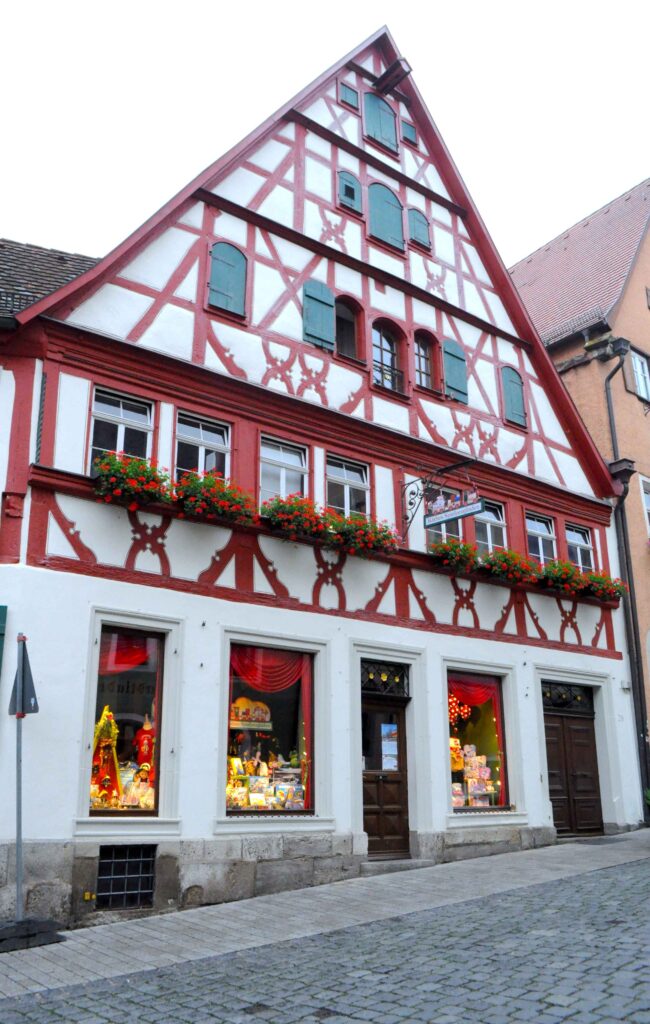
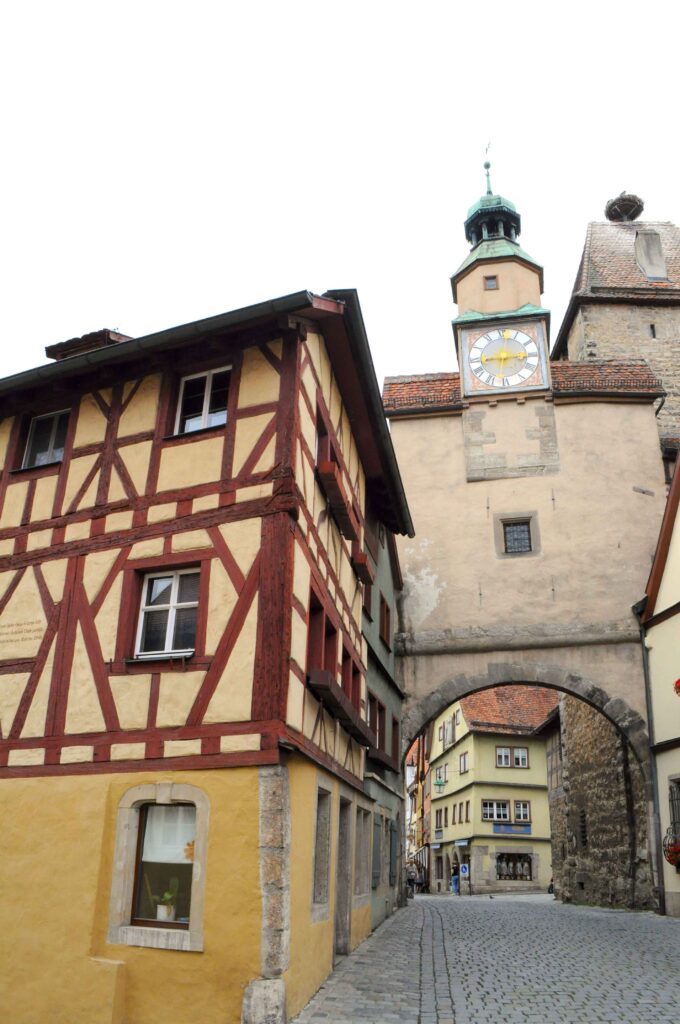
In the first floor, former dormitories of nuns have transformed to galleries of art and crafts, and impressive collections of rare armours and weapons. As I descended towards the northern cloister, the spectacular 13th century monastery kitchen appeared to my right. Preserved at its best, I leaned in to see the ‘monastery winch’ which was an apparatus to handout food to pilgrims and the poor.
A few metres outside the museum led me to Jakobskirche (St. James’ Church). The church was completed in 14th century. It exemplifies German craftsmanship with its High Altar set in excellent Swabian wood cravings. The 56-feet tall stained-glass windows around the chancel are even more compelling. I took the stairs to see the church’s top attraction—Heilig Blut Altar (Altar of Holy Blood). A crystal relic with three drops of Christ’s blood rested amidst a gilded cross.
To escape the crowds between St. James’ Church and Marktplatz, I climbed a steep 220 steps to Rathausturm (Town Hall Tower). The construction of the Gothic-style Rathaus begun in the 14th century. But like most other prominent structures in town, it was only completed during the Renaissance period. Thereby acquiring a mixed facade.
Atop the tower, the winds gave me a perfect setting to be one in silence with Rothenburg’s panorama. I stood above orange half-timbered gables of Marktplatz, when I saw a horde gather in front of Ratsherrntrinkstube (City Councillors’ Tavern), for the hourly enactment of Meistertrunk. Small windows on either side of Tavern’s clock open to show the scene.
Further beyond, I saw my next stop: Markusturm (Marcus Tower) and the medieval walls.
Read: Solo Destination: Berlin, Germany

The narrow Marcus Tower along with Röderbogen Arch dates back to 12th century and was among the first fortifications of the town. Today, Marcus Tower is one of the 42 towers and gates here.
A few steps after the tower, was a kitschy half-timbered house with carved wooden windows and a door. I entered Alt-Rothenburger Handwerkerhaus (Old Rothenburg Craftsman’s House). This house-turned-museum is a time capsule to the living quarters of a craftsman from 1270. All 11 rooms, including kitchen, storeroom, a loom, bed chambers and a room for journeymen (who assisted and learnt the craft from the host), were curated in a way to give its visitors an authentic insight to the original home. Drapes of laces hung from beds and tables. Intricate, earthy murals furnished wooden cupboards and shelves.
Once I stepped out of the period house, I took empty cobbled streets to the walls skirting the town. Rothenburg’s medieval walls run a long 2.5 kilometres with incredible view points. My favourite: Castle Gate to the west which offers a sweeping view Tauber Valley including the gorgeous Doppelbrücke (double-decker bridge) visible on a clear day.


The downfall
1631 marked the downfall of the fortified town when Thirty Years War, conflict between Catholics and Protestants, engulfed it. General Tilly, leading the Imperial Catholic Army with 40000 men ordered the Lutheran Protestant residents of Rothenburg to prepare for their arrival. The town resisted with closed gates and drawbridges. As a result, the army laid siege against the 6000 citizens of the walled town. After months of siege, the army ransacked the town for three more months, leaving it with no money, no resources and no strength to retaliate.
It was only after three years when Black Plague infested the town to consume 40 per cent of its remaining citizens. Thereafter, until the end of the War in 1648, the medieval town was repeatedly attacked by Catholics and Protestants, leading it to a long slumber with no future.
Read: Solo Destination: Dresden, Saxony, Germany

Bäckerei Striffler.

Tourists as saviours
After a 250-year lull, Rothenburg’s first tourists were the Romantic painters, around 1890. German Carl Spitzweg and British Arthur Wasse were among those who painted Rothenburg’s beautiful landscape on their canvas, as they searched of new idyllic landscapes.
It is believed that an American diplomat and important figure in the post-World War II world order, John J Mccloy’s mother had owned a painting of Rothenburg. In 1945, he saved the town by suggesting negotiations than bombing it in its heart, to kill Nazi troops who sought refuge here. Once negotiations had begun, the town surrendered the following day.
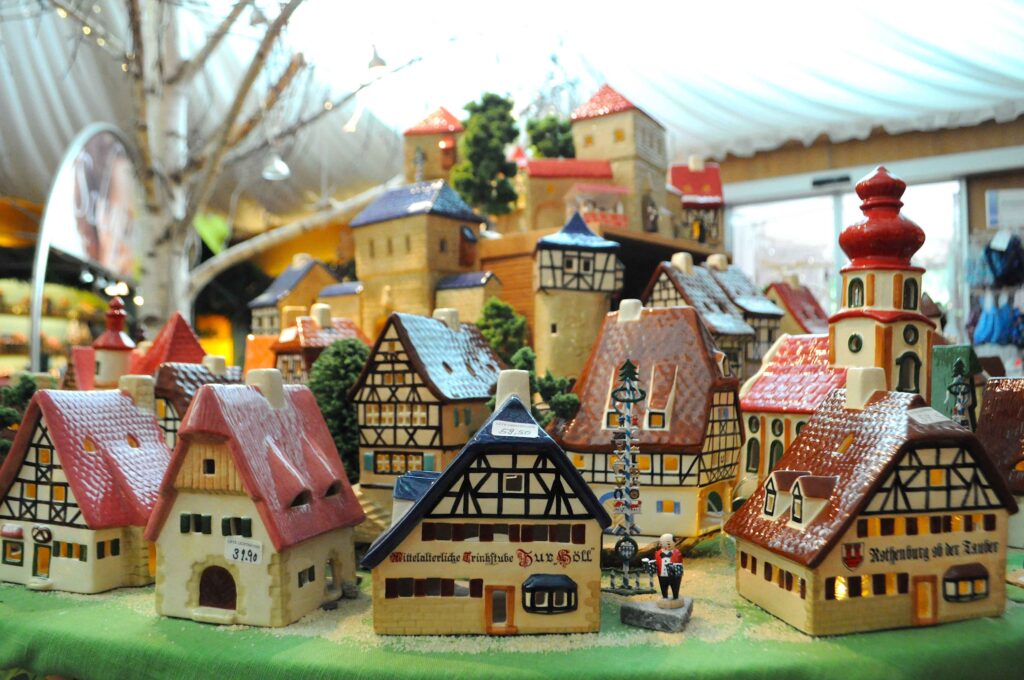
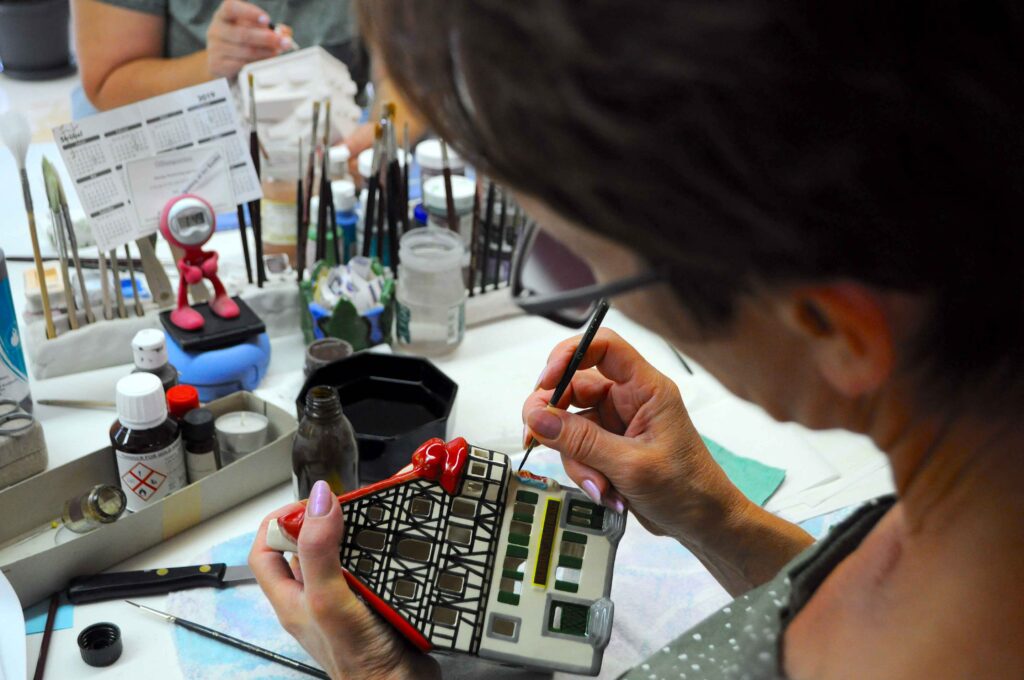
More than 50 years ago, Rothenburg’s City Administration devised a plan to rebuild the town. The lack of financial resources posed as a hazard. As a result, letters were written to various German and European newspapers for financial aid. Today this campaign is led by Association for Preservation of Historical Buildings, which literally sets in stone the names of the donators. Names of all the town’s benefactors have been etched onto the medieval walls of the town. Not only did people from world over send in money, but also began visiting this medieval gem.
As a part of its 21st century tourists, I can see physical evidence of how tourism revived this town. Whether people scatter in castle gardens, or throng to Rothenburg’s most photographed venue, Plönlein; or swarm the Night Watchman tour, I realise that sometimes being a part of a crowd is good.
Read: Solo Destination: Seiffen, Saxony, Germany
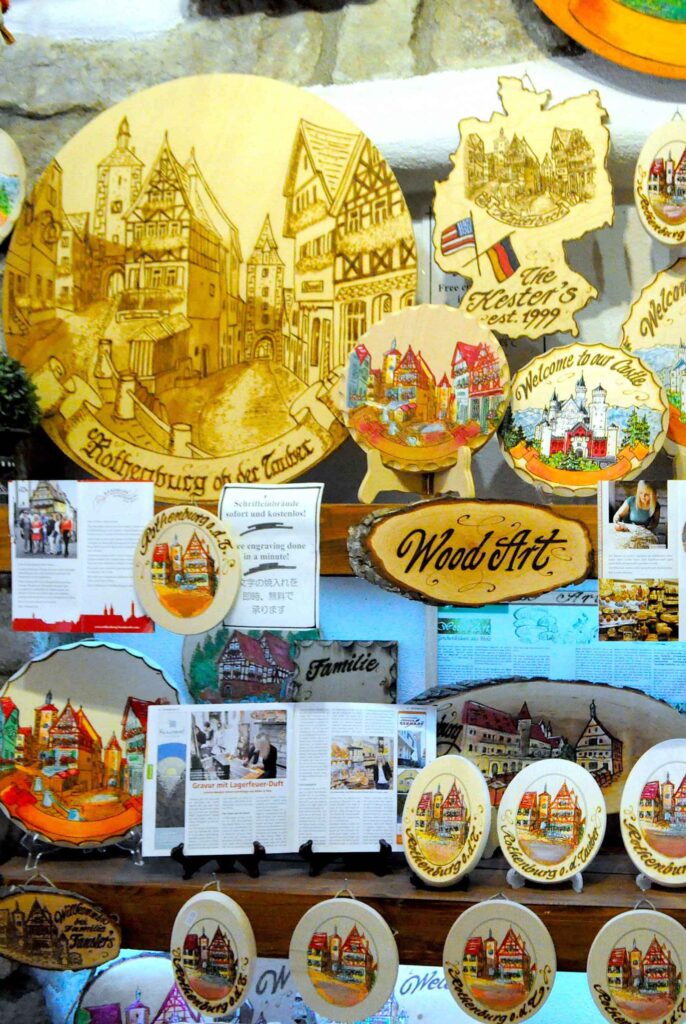
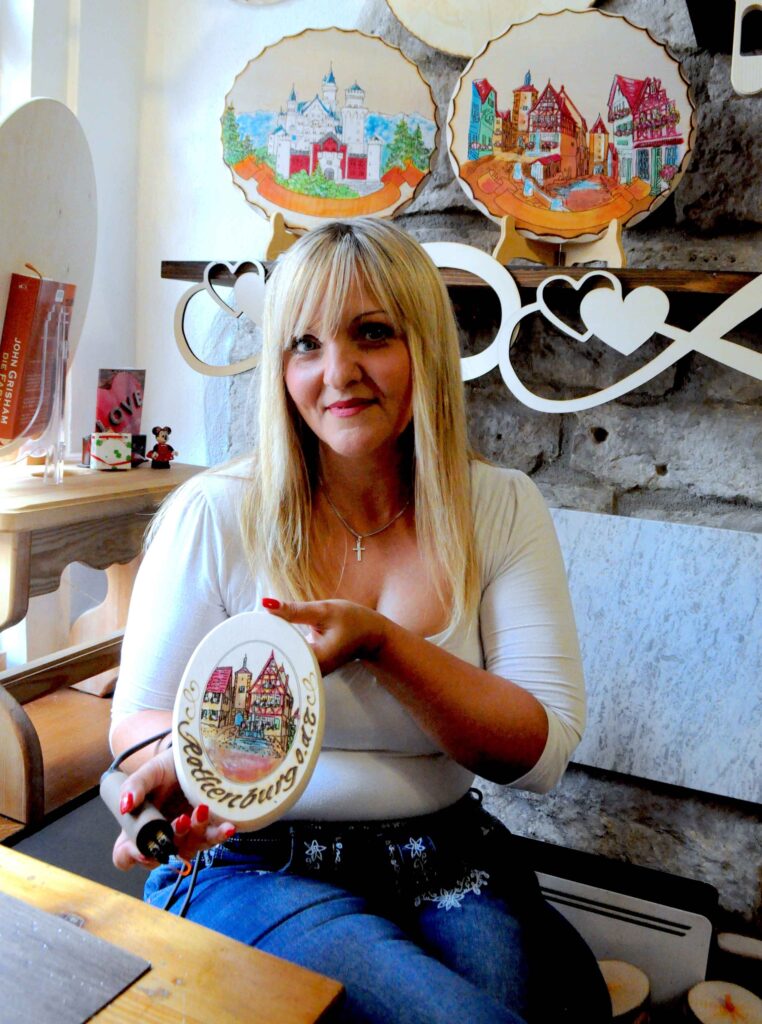
Practical Information
Getting there: Nuremberg Airport is approximately 120 kilometres away. Munich International Airport is 240 kilometres away. Deutsche Bahn (trains) take approximately 1.5 hours and 3.5 hours, from respective cities.
Getting around: Walking is the best way to explore the town.
Eat and buy Rothenburg’s traditional Schneeball (snowball) from Bäckerei Striffler on Untere Schmiedgasse 1; http://www.baecker-striffler.de.
Visit local art and crafts workshops:
-Leyk Lichthäuser, ceramics; https://www.leyk-shop.com/factory/rothenburg.
-Wood Art, wood burning on Obere Schmiedgasse 17. (Facebook page)

More things to do:
-Medieval Crime and Justice Museum on Burggasse 3; www.kriminalmuseum.eu.
-St. Wolfgang‘s Church on Klingentorbastei.
-Night Watchman Tour, 60 minutes, €8 (adults), no registration required.
-Ghost Tour with Executioner, 60 minutes, €9 (adults), no registration required.
Visiting and tour hours seasonally differ.
Read: Local Crafts of Saxony, Germany
For more travel photos, follow me on Instagram.



